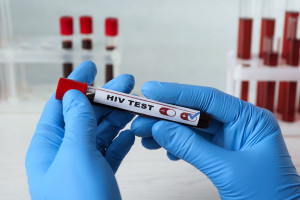US: Ban on Biological Weapons Research Abroad. Trump Signs Order

- Donald Trump introduces ban on funding for gain-of-function research abroad (so-called gain-of-function research)
- This is research aimed at modifying pathogens to obtain new biological functions.
- On the one hand, such genetic manipulations serve to better understand the pathogen and how it works, which can be helpful in developing new drugs and vaccines. But the negative consequence of creating more virulent, deadly viruses is the threat to humanity if they leak out of laboratories
- - Today I commend President Trump for his courage and vision to end biological weapons research in the United States, said U.S. Secretary of Health and Human Services Robert F. Kennedy.
- He recalled that the United States had transferred many biological tests to a laboratory in Wuhan, China.
- A possible leak of biological material from this laboratory is one of two theories of the cause of the COVID-19 pandemic
On May 5, 2025, U.S. President Donald Trump signed an executive order banning federal funding for Gain of Function (GOF) research abroad.
This English term covers so-called gain-of-function research. This refers to research aimed at modifying pathogens to obtain new biological functions.
On the one hand, such genetic manipulations serve to better understand the pathogen and how it acts, which can be helpful in the development of new drugs and vaccines.
But the negative consequence of creating more virulent, deadly viruses is the threat to humanity if they leak from laboratories.
This possibility remains one of two theories for the outbreak of the COVID-19 pandemic. It was alluded to by Trump, who said, “It could have been that we didn’t have the problem that we had,” referring to the impact of the pandemic.
As the US administration explains, the executive order just signed by Trump primarily provides new, effective tools to enforce the ban on federal funding of GOF research abroad that could make pathogens more dangerous or contagious. The document indicates countries that do not meet appropriate standards for conducting such research, literally naming China.
It also aims to strengthen other oversight mechanisms on the issue and create a comprehensive strategy to ensure that biomedical research is conducted safely and in a way that ultimately better protects human subjects.
At the same time, it also prohibits federal funding for other life science research conducted in countries of concern or in countries that lack adequate oversight to ensure compliance with U.S. oversight standards and policies that could pose a risk to public health, public safety, or economic or national security.
Kennedy: Much of the research has been moved to the Wuhan lab- This is a historic day. It is the end of federal funding for GOF research, as well as private corporate control over this research. This was the type of research that the US military and intelligence agencies had been doing since 1947. In 1969, the CIA said that we had achieved nuclear equivalence and that there were tools that could kill the entire US population for 29 cents per person. That same year, President Nixon went to Fort Detrick and announced a unilateral end to dual-use research, which was being done for the development of vaccinations, but also for military purposes. He then convinced over 180 countries to sign the Biological Weapons Convention in 1973. That essentially ended GOF research worldwide - commented Robert F. Kennedy, US Secretary of Health and Human Services, at the time of signing the order.
But the 2001 anthrax bioterrorist attacks reminded the world that biological threats were still real. They were preceded by the terrorist attacks on the World Trade Center. Kennedy cited the Patriot Act that followed.
"The Patriot Act included a little-known provision that said that while the Biological Weapons Convention is still in effect, U.S. federal officials who violate it could not be prosecuted. That reignited the bioweapons arms race that was fueled by GOF research. In 2014, three of these pathogens were leaked from U.S. labs, and President Obama declared a moratorium on their future use. But much of that research has been moved overseas to a lab in Wuhan. We have a bioweapons arms race here and around the world. China is engaged in developing all kinds of weapons using AI and CRISPR ( Clustered Regularly Interspaced Short Palindromic Repeats ) technology. So are Russia, Iran, and many other countries. Today, I commend President Trump for his courage and vision to end U.S. bioweapons research," Kennedy said.
The message of the US health secretary hits, among others, Anthony Fauci , former director of the National Institute of Allergy and Infectious Diseases (NIAID).
Already in 2021, he was questioned in the US Senate about the financial involvement of the National Institutes of Health (NIH) in SARS virus amplification research at the Wuhan Institute of Virology. As part of this research, spike proteins from naturally occurring coronaviruses were transplanted and chimeras of SARS-like viruses were created to study their ability to infect. The NIH denied that the research had any connection with the emergence of COVID-19.
Bioterrorist race of superpowersAfter World War II, the strategy of mutual deterrence with nuclear weapons dominated Cold War rivalry, but it did not mean abandoning the development of biological weapons. Both the US and the USSR worked on a more deadly strain of plague bacillus.
American research centers at Fort Detrick and Camp Frederick were developing programs to weaponize anthrax (Dr. Bruce Ivins, who was behind the aforementioned 2001 anthrax attacks, worked at Fort Detrick), tularemia, brucellosis, Coxiella burnetii , botulinum toxin, staphylococcal enterotoxin B, and Venezuelan equine encephalitis viruses. They also collected a number of agents that caused damage to wheat and rice crops.
In turn, the Soviet program implemented by Biopreparat – the agency responsible for biological weapons research in the USSR, focused on causing diseases such as hemorrhagic fevers, smallpox and anthrax, as well as inventing a new, surprising weapon that caused diseases that were difficult to diagnose and treat.
Attempts have been made to develop a "superbug" resistant to available antibiotics and vaccines, or to produce a new hybrid virus containing a combination of two microorganisms (so-called superbug), e.g. smallpox and encephalomyelitis (a zoonotic infectious disease causing inflammation of the brain). As a result, even if after the moment of surprise the enemy uses appropriate antibiotic therapy, in the next stage the infected will develop a viral disease.
Scientists also considered using smallpox to trigger a so-called "last epidemic" – a biological attack after a nuclear attack.
In 1969, Richard Nixon signed a ban on the use of biological agents under any circumstances. In 1972, members of the United Nations, including the United States, the USSR, and Iraq, signed the Biological Weapons Convention (Convention on the Prohibition of the Development, Production and Stockpiling of Bacteriological (Biological) and Toxin Weapons and on their Destruction). Although the convention banned the development, production, and stockpiling of chemical and bacteriological weapons, the ban was violated.
Dual use, or double application of biological materialDespite the "ingenious" work, states did not reach for this type of weapon (unlike chemical weapons) and for the first decades after the end of World War II, there were no spectacular cases of its use for criminal purposes by non-state organizations. Activity in this area can be observed since the 1960s.
According to data from the Monterey Institute of International Studies, between 1960 and 1999, there were 55 terrorist incidents involving biological agents. For example, in 1984, followers of the Bagwan Shree Rajneesh cult contaminated food in salad bars in Oregon, causing 751 cases of salmonella – in this way they wanted to limit residents' participation in elections and increase their chances. This method of fighting was also chosen by organizations operating for ideological reasons. In the 1970s and 1980s, it was mainly undertaken by leftist and ecological groups, as a form of protest against the government, American imperialism and the war in Vietnam, or the Marxist Red Army Faction in the Federal Republic of Germany. In the 1990s, this tactic was taken up by right-wing, nationalist and separatist groups, as well as religious sects.
The most famous incident was the attempt to spray botulinum toxin in the Tokyo subway, as well as anthrax and sarin, by the Japanese sect Aum Shinrikyo in the 1990s. In total, the group carried out 10 bioterrorist attacks, the most dramatic of which was the aforementioned sarin gas attack, which killed 19 people and required medical assistance for several thousand. In general, however, the organization, despite having the scientific and technical capabilities to use a biological agent on a large scale, did not achieve "success" in using anthrax and botulinum in the open.
rynekzdrowia










